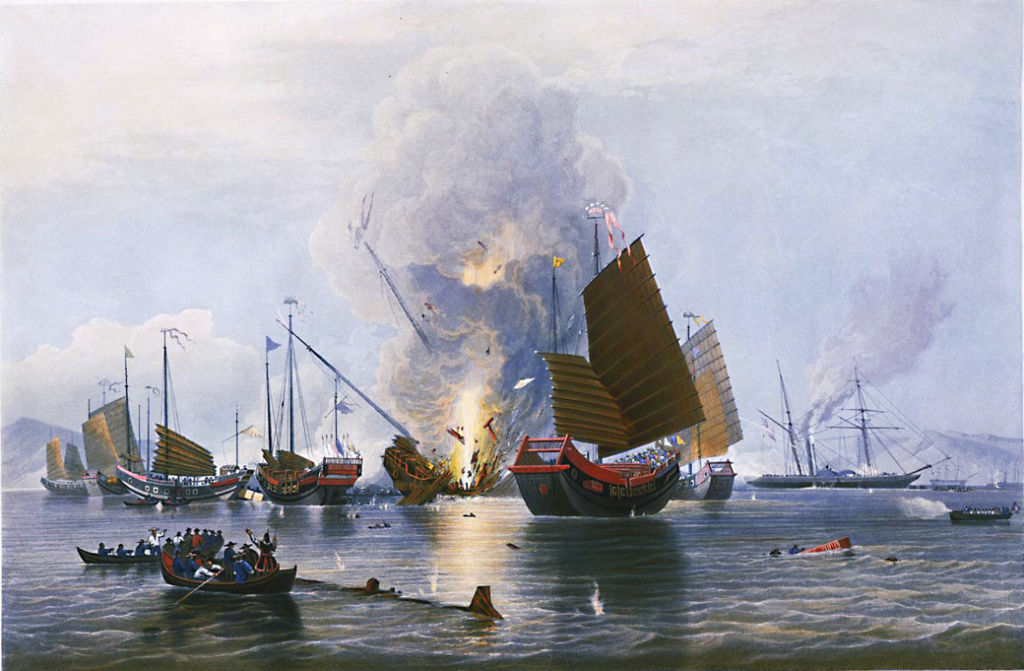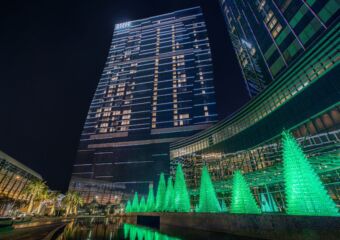Featured image photo credit: Wikipedia. Destroying of Chinese Ships during the Opium War. Painting by Edward Duncan, 1843
What most now know as a local community association Tung Sin Tong used to be an opium house (warehouse). Located at the intersection of Rua das Lorchas with Praça Ponte e Horta (Inner Harbour area), this building bears centuries of history, having been built in the 19th century. We take a look into the history of the opium trade in Asia and Macau’s role in it, but also this place’s legacy and what it now hosts.
A Brief History of Opium Presence in China
Like most of China and other Asian countries, Macau played an important role in the Opium Wars and trade until the mid-20th century. The Opium Wars took place from 1839 to 1842 and 1856 until 1860, between Great Britain and the Qing Dynasty’s forces.
During the 18th century, the British East India Company was deemed as the greatest commercial operator in all of the Canton area, mainly exporting tea and silk. There was a need to establish a commercial treaty with China, which the British were unable to do. Opium importation was deemed illegal from 1729 onwards, which made the relationship with Great Britain quite turmoiled, thus leading to military conflicts. The first war ended with the Treaty of Nanjing, which granted a series of advantages of the British over Chinese territory (right of imported goods, expansion) and the cession of Hong Kong Island. When the said treaty wasn’t followed, the second Opium War broke, ending with the signing of the Convention of Peking (where the Chinese gave away Kowloon).
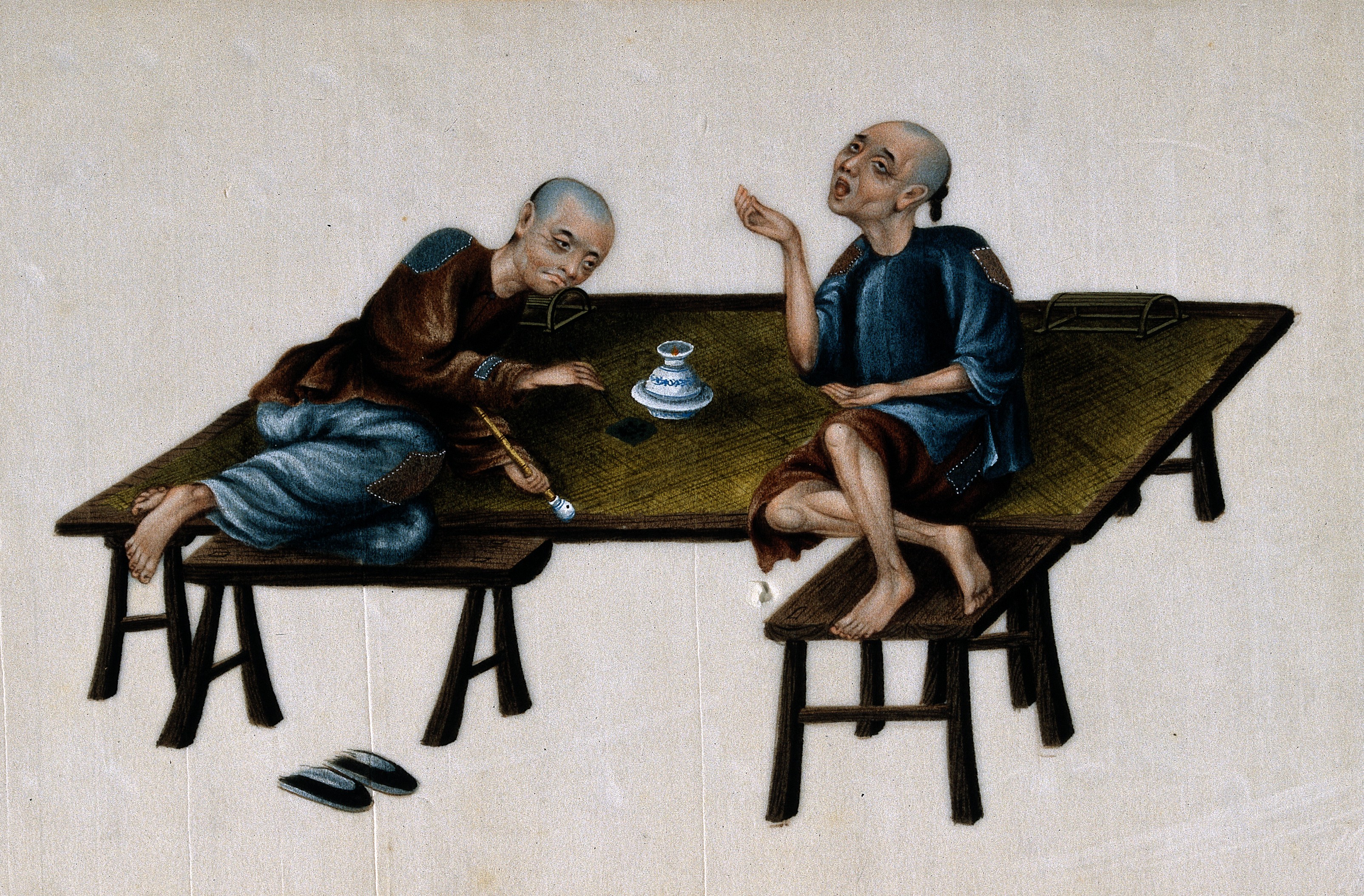
Photo credits: Wellcome Library, London. Two poor Chinese opium smokers. Gouache painting on rice-paper, 19th century.
Opium in Macau
Opium was legal in Macau, but not in China, the Portuguese government’s decision that brought great advantages to itself. All this was possible thanks to an official decree (1802) allowing Macau residents the exclusive privilege of opium importation. The region even had a factory of its own located close to the inner harbour, where this product was manufactured.
In 1839, Lin Zexu, Chinese government officer was sent to Guangdong to inspect the opium trade situation, having confiscated the whole batch and setting fire to it. He proceeded to block the access of the British to Canton, forcing them to head to Macau. However, the territory–which was already under Portuguese ruling by then–had to handle this situation very carefully. On one hand, there was the government in Lisbon, that wasn’t thrilled to have Macau in the middle, whereas on the other, was China, who also didn’t want the British in an access area. The then Chinese vice-king sent a note circulating throughout town warning all foreigners not to have their ships with opium in the territory’s coast, or else there would be “terrible” consequences. The then existing 1,000 opium boxes were shipped to Manila.
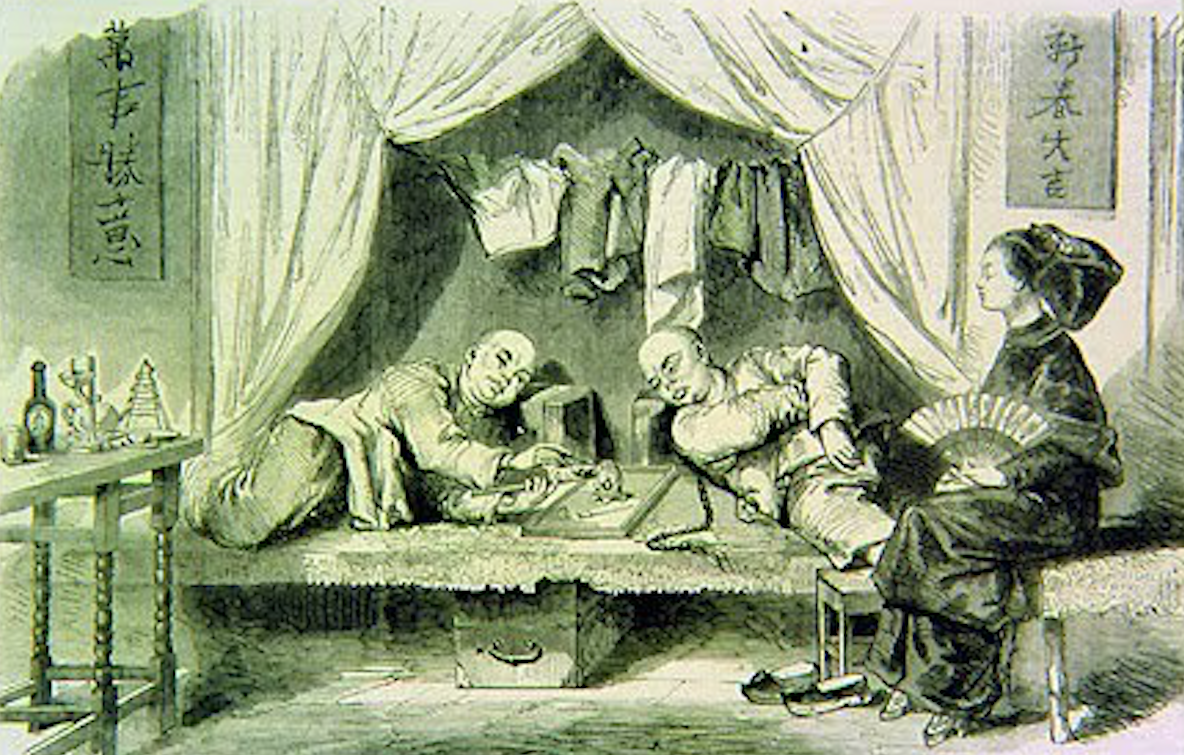
Photo credit: Canton, China: Opium Den wood print by Granger
From Opium House to Chinese Medicine Clinic
Like many other buildings in Macau, what now hosts Tung Sin Tong Association’s second clinic (in Praça de Ponte e Horta) also bear decades of history, including having been one of the region’s most important and relevant opium warehouses.
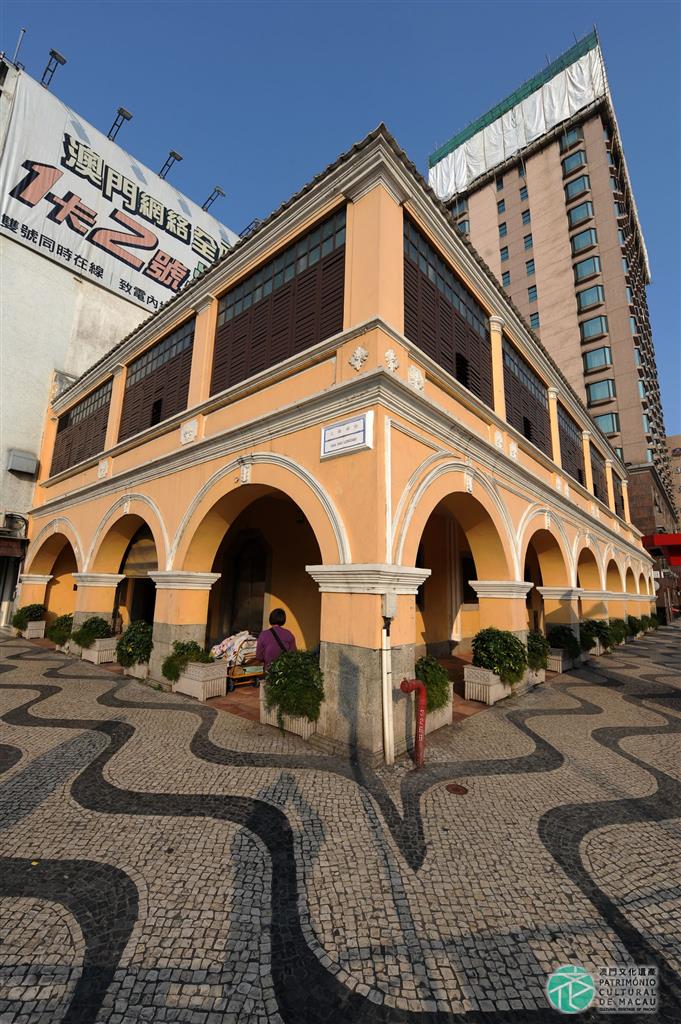
There were several illegal places as well. However, in the 19th century, one of Macau’s opium havens was Hospedaria On Iok Iun. Situated in Almeida Ribeiro avenue, it was a popular joint for people looking to smoke opium. This activity was done lying down (as the above picture shows) since the drug itself cause a bit of imbalance to the body and could have hallucinogenic effects. Special rules were applied to Macau, so the region became a kind of “free zone” of the Portuguese empire until it was completely banned in 1946. Opium was, at the time, along with gambling and fishing, one of the region’s most important and prosperous businesses. However, the local economy didn’t suffer much with the abolishment of the narcotic, since another business came into light: gold trading.
Also read: Rua da Felicidade: From Red-Light District to Hip Spot

